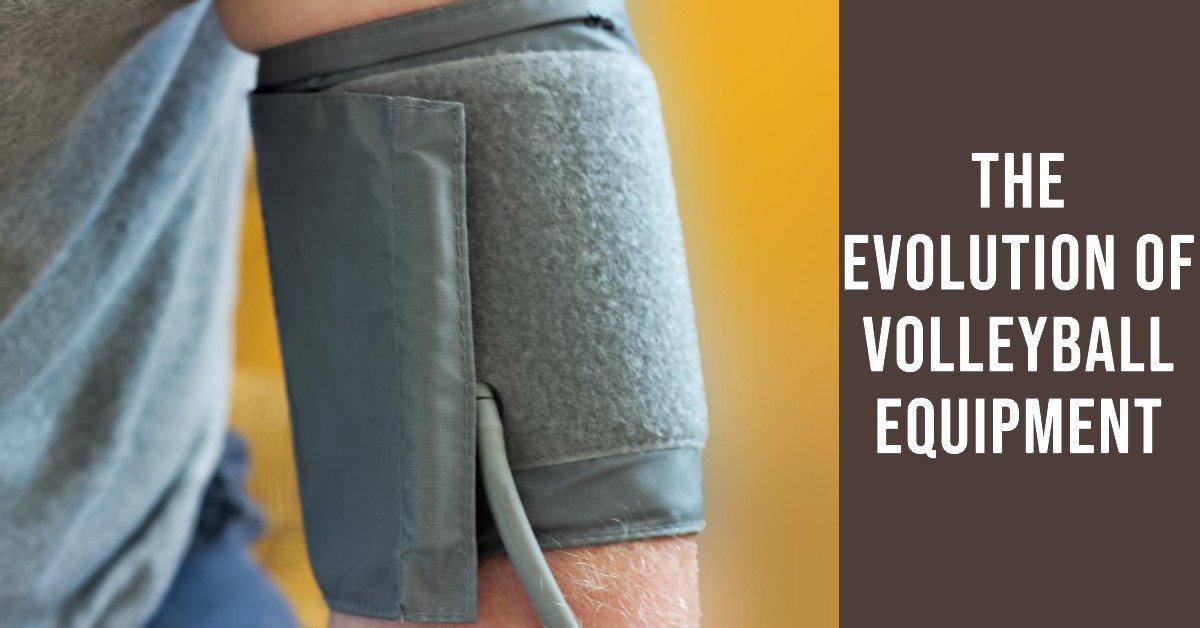Volleyball Equipment Timeline isn’t just a list—it’s a journey. Dive into the evolution of every spike, serve, and save. Ready to jump in?
Table of Contents
Volleyball, a sport that has captivated millions worldwide, has a rich history that is intertwined with the evolution of its equipment.
From the rudimentary setups of the late 19th century to the advanced gear of today, the equipment timeline of volleyball is a testament to the sport’s growth and the continuous quest for improvement. This article delves into the fascinating journey of volleyball equipment through the ages.

Key Takeaways:
- Volleyball originated in the United States in 1895.
- The sport has undergone significant changes in rules and equipment over the years.
- Modern volleyball has specialized equipment for both indoor and beach variants.
The Birth of Volleyball: 1895
In 1895, William G. Morgan, an instructor at the Young Men’s Christian Association (YMCA) in Holyoke, Massachusetts, introduced a game called “mintonette.” This game was a blend of basketball, baseball, tennis, and handball. The primary objective was to offer a less physically demanding sport than basketball for businessmen. The name “volleyball” was later suggested due to the volleying nature of gameplay.
Initial Equipment and Rules:
- Net Height: 6 feet, 6 inches.
- Court Dimensions: 25 x 50 feet.
- Ball: A rubber bladder covered with leather or canvas, weighing between 9 to 12 ounces.
Evolution in the Early 20th Century
By the early 1900s, volleyball had started to gain traction. The equipment and rules underwent several modifications to enhance the gameplay.
Changes in Equipment:
- 1900: Net height increased to 7 feet, 6 inches.
- 1912: Court size adjusted to 35 x 60 feet. The official ball was specified to be between 7 and 9 ounces in weight.
- 1920: The ball could be played with any part of the body above the waist. The court size was further adjusted to 30 x 60 feet.
The Mid-20th Century: Global Expansion
Volleyball’s popularity soared globally during the mid-20th century. With its expansion came the need for standardized equipment and rules.
Notable Equipment Changes:
- 1950: Players’ shirts had to have 4-inch high numbers.
- 1954: The official ball was mandated to be a twelve-piece laceless leather-covered ball.
- 1955: Backline players were allowed to spike the ball, provided they remained in the backcourt.
Modern Volleyball: Specialized Equipment

The late 20th and early 21st centuries witnessed the diversification of volleyball into indoor and beach variants. This led to the development of specialized equipment for each type.
Indoor Volleyball Equipment:
- Shoes: Designed for grip on wooden floors.
- Knee Pads: For protection during dives.
- Net System: Adjustable height systems with antennae for boundary determination.
Beach Volleyball Equipment:
- Balls: Lighter and larger than indoor balls.
- Sunglasses & Visors: Essential for daytime play.
- Sand Socks: Protect players’ feet from the hot sand.
The Future of Volleyball Equipment
With technological advancements, the future holds promise for even more refined volleyball equipment. From smart nets that can detect boundary violations to balls equipped with sensors for performance analysis, the possibilities are endless.
Volleyball Equipment Timeline: Delving Deeper
As we continue our exploration into the timeline of volleyball equipment, it’s evident that the sport has not only evolved in terms of gameplay but also in the gear that players use. The equipment has been modified over the years to enhance performance, safety, and aesthetics. Let’s delve deeper into some of the most significant changes in volleyball equipment over the years.
Jerseys: From Simplicity to Sophistication
The Early Days
From the inception of volleyball in 1895 until 1916, there were no specific jerseys designed for the sport. Players would often wear whatever was comfortable and available. However, as the sport gained popularity, the need for a standardized uniform became evident.
Evolution Over the Years
Initially, jerseys resembled basketball uniforms and were sleeveless. Over time, they transitioned to short-sleeved and eventually to long-sleeved, especially for players in the NCAA. The transformation of jerseys was influenced by both appearance and performance. Long-sleeved jerseys, for instance, offer more comfort in colder gyms and provide better ball control during digs.
Shoes: Foundation of the Game

The Initial Footwear
In the early days, players used cotton canvas shoes with thermoplastic rubber soles. It wasn’t until the 1930s that shoes specifically designed for volleyball were introduced.
Modern Volleyball Shoes
Today’s volleyball shoes are engineered for performance. They offer excellent traction on the gym floor, thanks to the rubber sole. Additionally, the midsole, made of foam, gel, or air cushions, provides support, especially during the lateral movements that are so characteristic of volleyball.
Kneepads: Protecting the Players
Kneepads have undergone significant changes over the years. Initially, they were bulky and resembled a turtle’s shell. Modern kneepads, however, are sleeker, flatter, and more flexible. Their primary purpose remains the same: to protect players’ knees during dives and falls. Interestingly, while kneepads were initially worn to cover the knees, many players today wear them below the knees, prioritizing aesthetics over protection.
Additional Equipment: Enhancing the Game
With the modern era of volleyball, several additional pieces of equipment have been introduced. These include:
- Headbands: Such as the multifunctional Hoorag headbands.
- Ankle Weights: For strength training.
- Finger Tape: To prevent injuries.
- Elbow Pads: For added protection.
